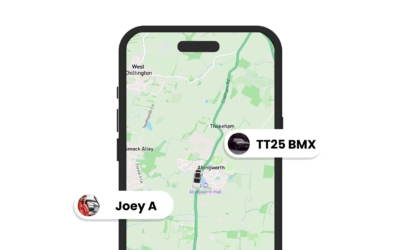Keeping taxis on the road is the only way your operation makes money. Preventive maintenance moves you away from fire-fighting and into predictable uptime, happier passengers and lower long-term costs. This guide walks through a practical plan you can implement now, with tools, processes and metrics tailored to taxi and PHV fleets. Read on for checklists, tech tips and the exact KPIs to watch.
Why Preventive Maintenance Matters for Taxi Fleets
Taxi fleets operate under heavy duty cycles: continuous short trips, frequent starts and stops, lots of passenger loading and varied urban conditions. That combination accelerates wear on brakes, clutches, suspension and HVAC systems. By adopting a preventive maintenance approach you reduce unplanned downtime, avoid costly roadside recoveries and keep drivers available during peak windows. The gains are tangible. Less downtime means higher utilisation and better revenue per vehicle. It also protects your brand: a clean, reliable cab keeps passengers returning and reduces complaints.
Reduce downtime and increase uptime
Scheduled servicing catches small faults before they become failures. A proactive inspection routine keeps vehicles in service longer and slotting maintenance into low-demand periods avoids lost fares. Think of it as moving from reactive repairs to planned interventions.
Lower total operating costs
Routine oil, filter and brake work improves fuel economy and extends component life. Preventing a seized turbo or a failed transmission saves tens of thousands compared with repeated emergency fixes. Over the fleet lifecycle, these savings compound into real budget relief.
Safety, compliance and customer experience
Compliance with local inspection regimes and safety standards is non-negotiable. Well-maintained taxis reduce accident risk and insurance claims. Plus, a comfortable cab, working A C and clean interior boost passenger satisfaction and driver retention.
Building a Preventive Maintenance Plan
Start with a clear inventory and segmentation. Not every vehicle needs the same schedule. Age, mileage and duty cycle should determine your service cadence. Build simple, repeatable schedules that technicians and drivers can follow without guesswork. Include escalation rules for repeating faults and define maximum allowed days out of service. With clear SOPs you cut repair times and standardise quality across workshops.
Fleet inventory and vehicle classification
Classify by age bands, engine type, typical shift length and average daily mileage. Older vehicles should move to shorter inspection intervals. Hybrid or hybrid-like powertrains may need different attention around battery and regenerative systems.
Maintenance schedules and interval setting
Choose a hybrid approach: time-based checks for fluids and tyres, plus mileage triggers for major services. Seasonal checks are vital in regions with hot summers; HVAC performance impacts passenger comfort and driver health.
Standard operating procedures and service level definitions
Document inspection checklists for pre-shift and weekly in-depth checks. Define turnaround targets, such as same-day minor repairs and 48-hour major repair limits, to reduce unexpected downtime.
Tools and Technology to Optimise Maintenance
You cannot run modern maintenance efficiently without the right tech. Telematics provides real-time insight, while a proper maintenance management system coordinates work and parts. Use data to move from scheduled care to predictive interventions, catching trends before they cause faults. Integrating these systems makes your workshop smarter and faster.
Telematics and real-time diagnostics
Vehicle Tracking and on-board telematics give you engine fault codes, temperature trends and driving behaviour insights. Those alerts let you address issues before they escalate and reduce emergency callouts. With geofencing you can also automate depot arrival checks and service reminders.
Maintenance management software (CMMS/FMS)
A CMMS organises schedules, work orders and history. It makes handovers between dispatch, drivers and workshop seamless. Mobile technician interfaces accelerate diagnosis and capture parts used for accurate cost-per-job accounting.
Predictive maintenance and analytics
Analytics tools detect patterns that human schedulers may miss. Predictive alerts on components based on usage patterns reduce surprise downtime. This is where monitoring delivers real ROI: fewer trips to the garage, more trips booked.
Execution: Inspections, Repairs, and Parts Management
Execution is the hard part. The difference between a plan and improved uptime is how well drivers, fleet controllers and technicians work together. Simple, enforceable inspection routines combined with fast parts replenishment keep workshop flow moving. Cross-train staff and create escalation paths for issues that require urgent attention.
Pre- and post-shift inspections and driver reporting
Make pre-shift checks quick and actionable: lights, tyres, fluids, seatbelts and any dashboard warnings. Encourage photos on faults and a short description. That evidence speeds diagnosis and reduces back-and-forth with technicians.
Parts inventory, procurement, and lifecycle planning
Identify critical spares and set reorder points. For taxis, brake pads, bulbs and filters are mission critical. Decide OEM versus aftermarket based on lifecycle cost, warranty and availability. You want parts in stock for same-day fixes during busy periods.
Workshop workflow and third-party maintenance
Optimise bay scheduling and define clear rules for outsourcing specialised tasks. Track job times to improve MTTR (mean time to repair) and create a technician skills matrix so complex jobs go to the right people first time.
Ready to cut downtime now? Book a demo with Traknova to see how live vehicle alerts, automated work orders and predictive analytics can transform your taxi fleet operations. Book demo or contact us to discuss a bespoke plan for your taxis.
Monitoring Performance and Continuous Improvement
Maintenance is not set-and-forget. Monitor KPIs, review them regularly and iterate your plan. The right metrics show where to invest and what to stop doing. Use lessons from incidents to adjust intervals, retrain drivers or change parts suppliers. Continuous improvement keeps costs down and reliability up.
Key metrics and KPIs to track
Track metrics such as MTTR, MTBF, vehicle availability, cost per mile and compliance rates. These KPIs tell you if your plan is working and where pressure points exist. Make them visible to operations and maintenance teams.
Budgeting, ROI, and prioritising investments
Fit your maintenance programme to the budget cycle. Prioritise investments with clear ROI: telematics that reduce emergency repairs, or a parts-management tool that cuts holding costs while preventing stockouts.
Training, documentation, and feedback loops
Regular training for drivers and technicians is essential. Keep maintenance records accessible and audit them. Use feedback loops from drivers and customers to refine checklists and schedules.
Conclusion
Preventive maintenance is not just a cost centre; it is a revenue-protection strategy. By segmenting your fleet, setting logical intervals, investing in telematics and enforcing simple SOPs you can significantly reduce downtime and improve passenger satisfaction. Small, consistent changes deliver big results over the fleet lifecycle.
Take the next step: See Traknova in action. Book demo today for a live walkthrough tailored to your taxi fleet.
Frequently Asked Questions
How often should taxis be serviced?
Baseline services every 10,000 to 15,000 kilometres are common, with more frequent checks for older vehicles or cars operating in dense urban cycles. Implement daily pre-shift checks and weekly in-depth inspections.
Can telematics really reduce maintenance costs?
Yes. Telemetry that surfaces fault codes and driving behaviour helps you address causative issues early, reducing expensive repairs and fuel waste. Integrating telematics with a CMMS amplifies the benefit.
What KPIs show preventive maintenance is working?
Key indicators include increased vehicle availability, reduced MTTR, longer MTBF, lower maintenance cost per mile and fewer roadside recoveries.
Should I outsource maintenance or keep it in-house?
That depends on scale and specialisation. In-house workshops are great for standard servicing and quick turnarounds. Outsource specialised diagnostics or major overhauls as needed. Hybrid models often deliver the best balance.
How can I start small if I have limited budget?
Begin with a simple pre-shift checklist, a basic parts reorder policy for critical spares and a pilot telematics device on a subset of vehicles. Measure the gains and scale from there.
We want your feedback. Did this guide help you refine your preventive maintenance approach? Tell us what you tried and what results you saw. If you found this useful, please share it with colleagues on LinkedIn or Twitter.
Question for fleet managers: what single maintenance change delivered the biggest uptime boost for your fleet? Share your answer in the comments or contact us — we read every response.









